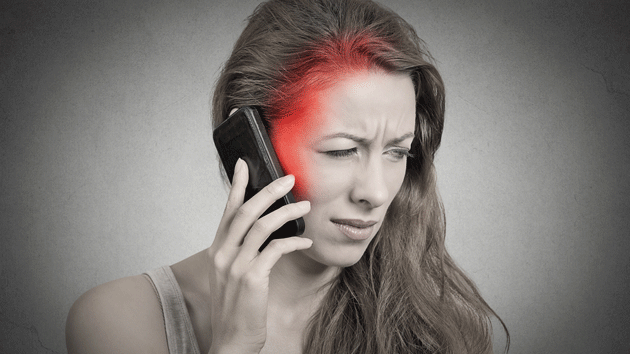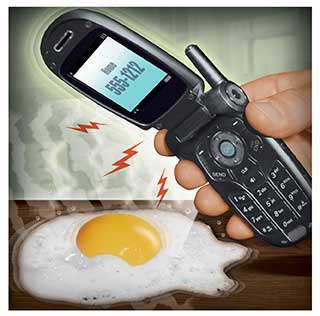
<a href="http://www.shutterstock.com/cat.mhtml?lang=en&language=en&ref_site=photo&search_source=search_form&version=llv1&anyorall=all&safesearch=1&use_local_boost=1&searchterm=cell%20phone%20radiation&show_color_wheel=1&orient=&commercial_ok=&media_type=images&search_cat=&searchtermx=&photographer_name=&people_gender=&people_age=&people_ethnicity=&people_number=&color=&page=1&inline=226953583">PathDoc</a>/Shutterstock
Are government officials doing enough to protect us from the potential long-term health effects of wearable devices and cellphones? Maybe not. A letter released today, signed by 195 scientists from 39 countries, calls on the United Nations, the World Health Organization (WHO), and national governments to develop stricter controls on these and other products that create electromagnetic fields (EMF).
“Based on peer-reviewed, published research, we have serious concerns regarding the ubiquitous and increasing exposure to EMF generated by electric and wireless devices,” reads the letter, whose signatories have collectively published more than 2,000 peer-reviewed papers on the subject. “The various agencies setting safety standards have failed to impose sufficient guidelines to protect the general public, particularly children who are more vulnerable to the effects of EMF.”
For decades, some scientists have questioned the safety of EMF, but their concerns take on a heightened significance in the age of ubiquitous wifi routers, the Internet of Things, and the advent of wearable technologies like the Apple Watch and Fitbit devices, which remain in close contact with the body for extended periods.
Cellphones, among the most studied emitters of electromagnetic radiation, remain the standard for judging health risks. The federal Centers for Disease Control and Prevention maintains that “we do not have the science to link health problems to cell phone use.” In a 2012 review of all available research, Timothy Moynihan, a doctor with the respected Mayo Clinic, concluded that “there’s no consensus about the degree of cancer risk—if any—posed by cell phone use.”
The WHO, on the other hand, classifies radio-frequency electromagnetic radiation (the type emitted by wifi routers and cellphones) as “possibly carcinogenic to humans” based on limited evidence associating cellphone use with an increased risk for glioma, a malignant type of brain cancer. “The conclusion means that there could be some risk,” Dr. Jonathan Samet, a medical professor at the University of Southern California and chair of the WHO panel that made the determination, explained in 2011, “and therefore we need to keep a close watch for a link between cell phones and cancer.”
Studies since then have highlighted the need for caution. Last year, French researchers found an almost three-fold increase in the incidence of brain cancer in people with more than 900 hours of lifetime cellphone use. Then, in March, Swedish researchers reported that the risk of being diagnosed with brain cancer increased by a factor of three in people who’d used cell or cordless phones for at least 25 years. Research on lab animals has caused similar concerns.
Respected medical groups are starting to pay attention. In 2013, the American Academy of Pediatrics urged the Federal Communications Commission, which regulates radiation levels in communication devices, to adopt cellphone standards that are more protective for children, and to better disclose products’ EMF levels to consumers. In December, the California Medical Association urged regulators to “reevaluate microwave radiation exposure levels associated with wireless communication devices.”
Most of the researchers who signed today’s appeal letter believe that there’s now enough evidence to classify radio-frequency EMF as “probably carcinogenic” or even just plain “carcinogenic,” says Joel Moskowitz, director of the Center for Family and Community Health at the University of California-Berkeley, who played a central role in gathering the signatures. “All of them are clearly calling for the need for caution.”
Reports about a lack of scientific consensus on the health effects of cellphones, which have appeared in Slate, Wired, the Verge, and elsewhere are somewhat misleading, Moskowitz contends. In a 2009 review for the Journal of Clinical Oncology, he parsed cellphone studies based on the funding source and quality of the science. He found that low-quality and industry-funded studies tended not to associate cellphone use with a heightened risk of tumors, while high-quality and foundation- or public-funded studies usually found the opposite result. “This is very much like studying tobacco back in the 1950s,” he says. “The industry has co-opted many researchers.”
In 2011, Moskowitz consulted for the San Francisco Board of Supervisors after it voted to pass the nation’s first right-to-know cellphone ordinance. The law would have forced retailers to warn consumers about potentially dangerous radiation levels emitted by cell phones, but the supervisors agreed to effectively nix the law to settle a court challenge by the Cellular Telecommunications Industry Association; the industry’s lead trade group argued that the law violated its free speech rights. (The CTIA did not return a call from Mother Jones requesting comment on today’s appeal letter and the health effects of cellphones.)
On Tuesday, the Berkeley City Council will vote on a right-to-know law that was carefully worded to thwart legal challenges. Harvard Law School Professor Lawrence Lessig, who helped craft the law, has volunteered to defend it in court pro bono. “We are really all part of a large biological experiment without our informed consent,” says Columbia University EMF expert Martin Blank in a video released to coincide with today’s letter. “To protect ourselves, our children, and our ecosystem, we must reduce exposure by establishing more protective guidelines.”
















